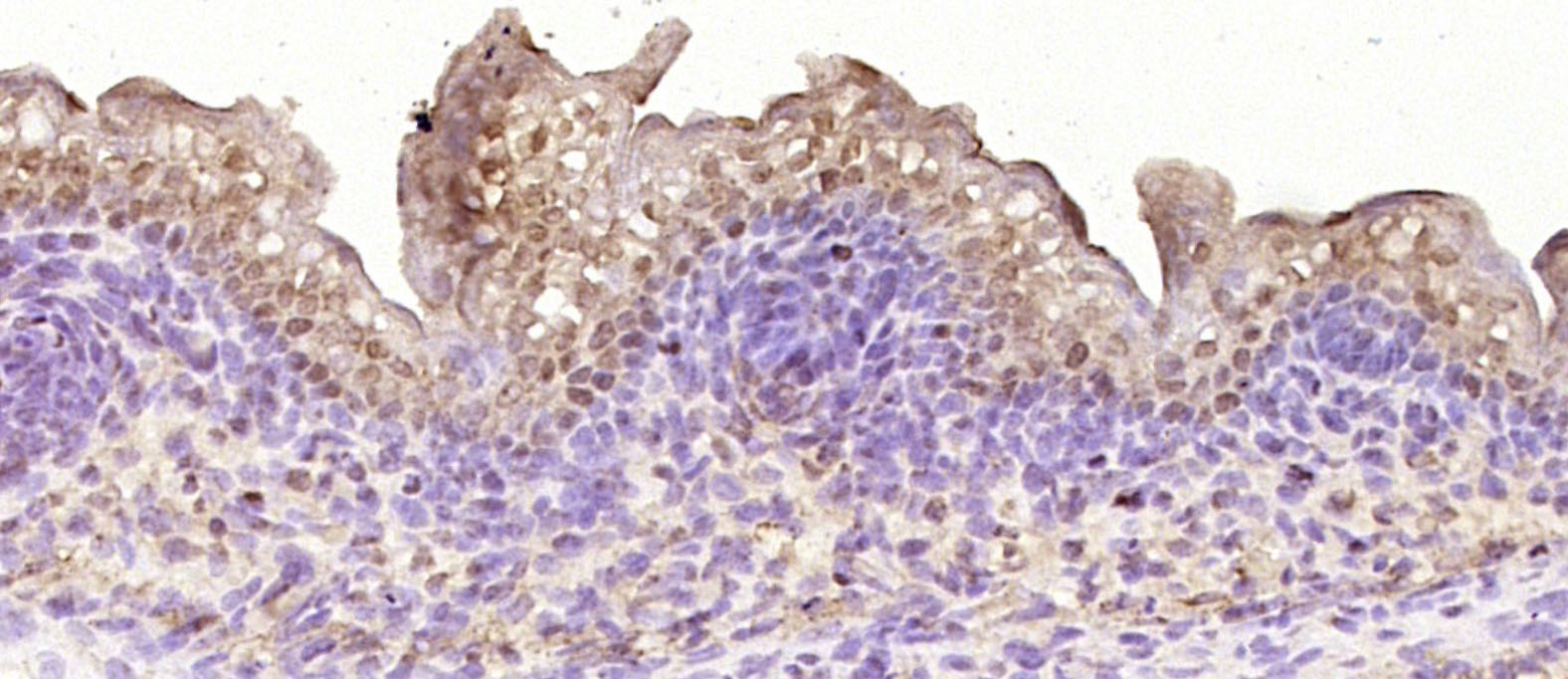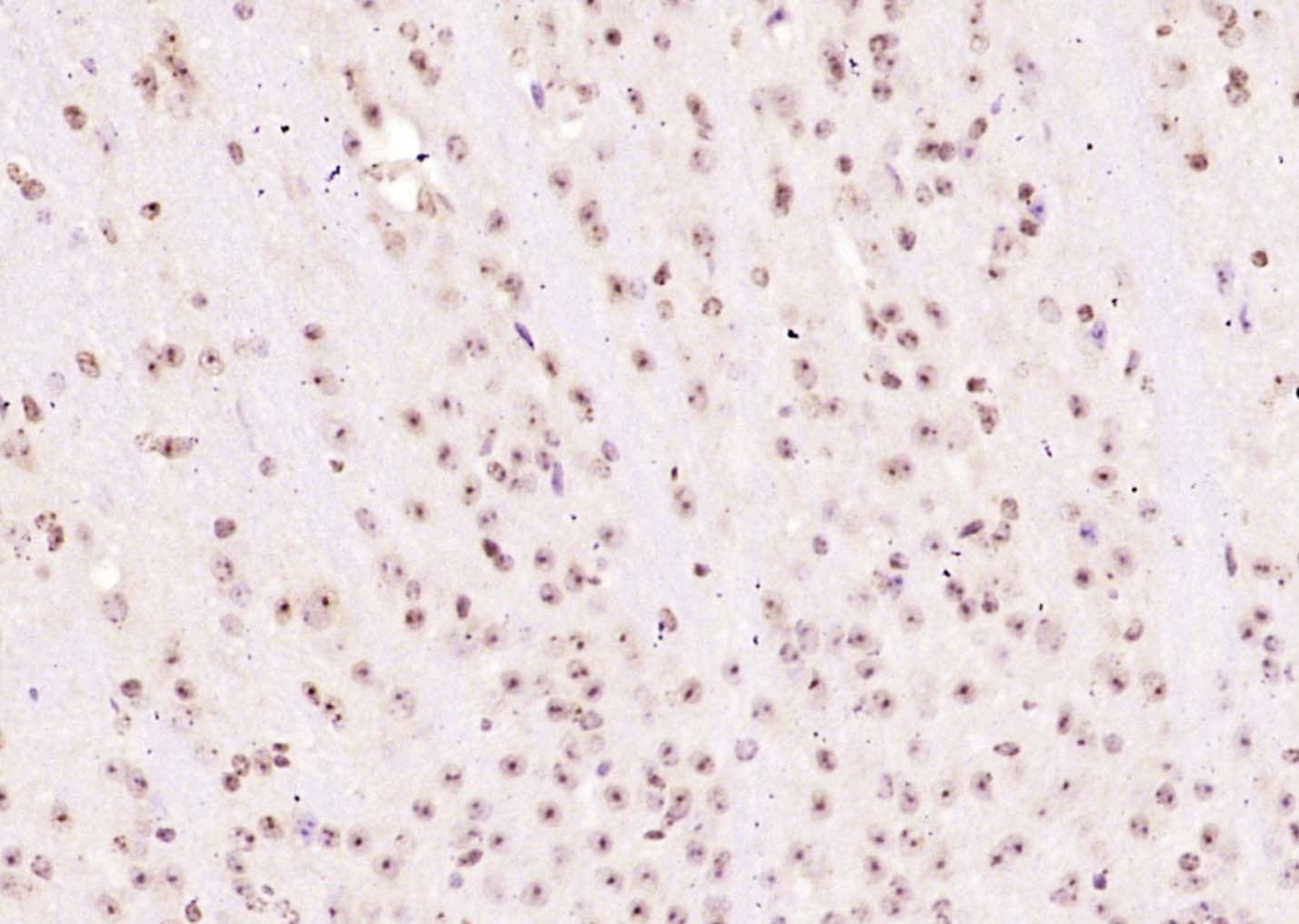
Rabbit Anti-Brachyury antibody
TBXT_HUMAN; Brachyury homolog; Brachyury protein; Bry; MGC104817; Protein T; T; T brachyury homolog; T Protein; T, brachyury homolog (mouse); TFT; Transcription factor T;T-box transcription factor T.
View History [Clear]
Details
Product Name Brachyury Chinese Name Brachyury蛋白抗体 Alias TBXT_HUMAN; Brachyury homolog; Brachyury protein; Bry; MGC104817; Protein T; T; T brachyury homolog; T Protein; T, brachyury homolog (mouse); TFT; Transcription factor T;T-box transcription factor T. Research Area Cardiovascular Developmental biology Stem cells transcriptional regulatory factor Immunogen Species Rabbit Clonality Polyclonal React Species Mouse, (predicted: Human, Rat, Dog, Pig, Cow, Sheep, ) Applications WB=1:500-2000 ELISA=1:5000-10000 IHC-P=1:100-500 IHC-F=1:100-500 ICC=1:100-500 IF=1:100-500 (Paraffin sections need antigen repair)
not yet tested in other applications.
optimal dilutions/concentrations should be determined by the end user.Theoretical molecular weight 48kDa Cellular localization The nucleus Form Liquid Concentration 1mg/ml immunogen KLH conjugated synthetic peptide derived from human Brachyury : 1-100/435 Lsotype IgG Purification affinity purified by Protein A Buffer Solution 0.01M TBS(pH7.4) with 1% BSA, 0.03% Proclin300 and 50% Glycerol. Storage Shipped at 4℃. Store at -20 °C for one year. Avoid repeated freeze/thaw cycles. Attention This product as supplied is intended for research use only, not for use in human, therapeutic or diagnostic applications. PubMed PubMed Product Detail The protein encoded by this gene is an embryonic nuclear transcription factor that binds to a specific DNA element, the palindromic T-site. It binds through a region in its N-terminus, called the T-box, and effects transcription of genes required for mesoderm formation and differentiation. The protein is localized to notochord-derived cells. Two transcript variants encoding different isoforms have been found for this gene. [provided by RefSeq, Jul 2012]
Function:
Involved in the transcriptional regulation of genes required for mesoderm formation and differentiation. Binds to a palindromic site (called T site) and activates gene transcription when bound to such a site.
Subunit:
Monomer.
Subcellular Location:
Nucleus.
DISEASE:
Neural tube defects (NTD) [MIM:182940]: Congenital malformations of the central nervous system and adjacent structures related to defective neural tube closure during the first trimester of pregnancy. Failure of neural tube closure can occur at any level of the embryonic axis. Common NTD forms include anencephaly, myelomeningocele and spina bifida, which result from the failure of fusion in the cranial and spinal region of the neural tube. NTDs have a multifactorial etiology encompassing both genetic and environmental components. Note=Disease susceptibility is associated with variations affecting the gene represented in this entry.
Chordoma (CHDM) [MIM:215400]: Rare, clinically malignant tumors derived from notochordal remnants. They occur along the length of the spinal axis, predominantly in the sphenooccipital, vertebral and sacrococcygeal regions. They are characterized by slow growth, local destruction of bone, extension into adjacent soft tissues and rarely, distant metastatic spread. Note=Disease susceptibility is associated with variations affecting the gene represented in this entry. Susceptibility to development of chordomas is due to a T gene duplication.
Similarity:
Contains 1 T-box DNA-binding domain.
SWISS:
O15178
Gene ID:
6862
Database links:Entrez Gene: 6862 Human
Entrez Gene: 20997 Mouse
Omim: 601397 Human
SwissProt: O15178 Human
SwissProt: P20293 Mouse
Unigene: 389457 Human
Unigene: 913 Mouse
Product Picture
Bought notes(bought amounts latest0)
No one bought this product
User Comment(Total0User Comment Num)
- No comment





 +86 571 56623320
+86 571 56623320
 +86 18668110335
+86 18668110335

